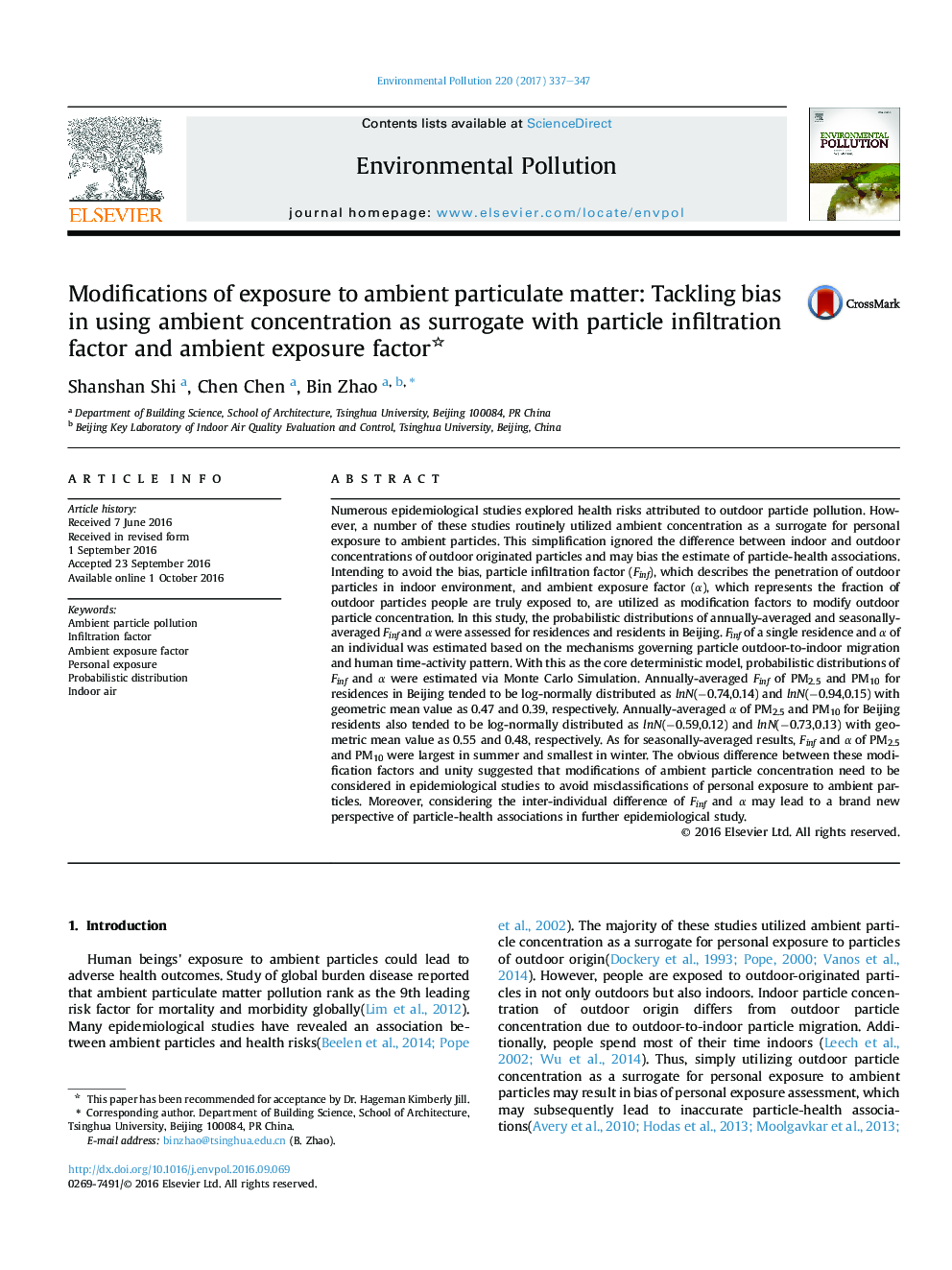| کد مقاله | کد نشریه | سال انتشار | مقاله انگلیسی | نسخه تمام متن |
|---|---|---|---|---|
| 5749225 | 1412476 | 2017 | 11 صفحه PDF | دانلود رایگان |
- Epidemiological studies use ambient concentration as surrogate of particle exposure.
- People mainly stay indoors, the particle concentration is different from outdoors.
- Ambient particle concentration is modified account for outdoor-indoor transfer.
- The modification would vary as different buildings and individuals.
- The modifications of ambient particle would avoid exposure misclassifications.
Numerous epidemiological studies explored health risks attributed to outdoor particle pollution. However, a number of these studies routinely utilized ambient concentration as a surrogate for personal exposure to ambient particles. This simplification ignored the difference between indoor and outdoor concentrations of outdoor originated particles and may bias the estimate of particle-health associations. Intending to avoid the bias, particle infiltration factor (Finf), which describes the penetration of outdoor particles in indoor environment, and ambient exposure factor (α), which represents the fraction of outdoor particles people are truly exposed to, are utilized as modification factors to modify outdoor particle concentration. In this study, the probabilistic distributions of annually-averaged and seasonally-averaged Finf and α were assessed for residences and residents in Beijing. Finf of a single residence and α of an individual was estimated based on the mechanisms governing particle outdoor-to-indoor migration and human time-activity pattern. With this as the core deterministic model, probabilistic distributions of Finf and α were estimated via Monte Carlo Simulation. Annually-averaged Finf of PM2.5 and PM10 for residences in Beijing tended to be log-normally distributed as lnN(â0.74,0.14) and lnN(â0.94,0.15) with geometric mean value as 0.47 and 0.39, respectively. Annually-averaged α of PM2.5 and PM10 for Beijing residents also tended to be log-normally distributed as lnN(â0.59,0.12) and lnN(â0.73,0.13) with geometric mean value as 0.55 and 0.48, respectively. As for seasonally-averaged results, Finf and α of PM2.5 and PM10 were largest in summer and smallest in winter. The obvious difference between these modification factors and unity suggested that modifications of ambient particle concentration need to be considered in epidemiological studies to avoid misclassifications of personal exposure to ambient particles. Moreover, considering the inter-individual difference of Finf and α may lead to a brand new perspective of particle-health associations in further epidemiological study.
146
Journal: Environmental Pollution - Volume 220, Part A, January 2017, Pages 337-347
